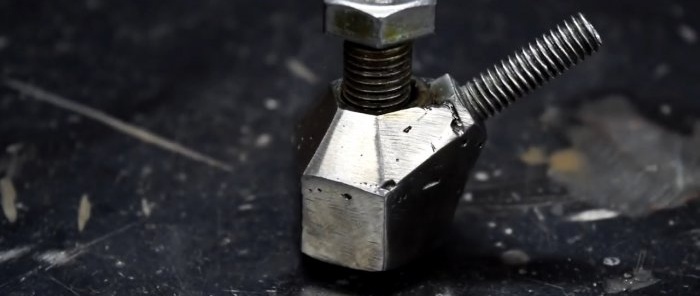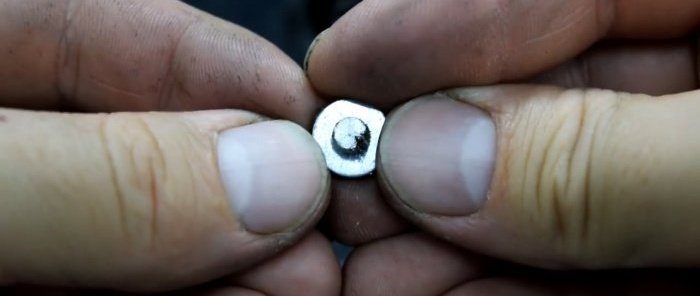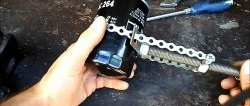Materials:
- bolts M10, M14;
- nuts M8, M10, M14, M18;
- washers M10 2 pcs., M14;
- neodymium magnets washers d8 mm, d12-16 mm -
- Super glue.
Making a magnetic contact
A nut of the appropriate size is screwed onto the M14 bolt. Then an M8 nut is welded to its end. The weld seam and its protruding edges are ground off.
Next, an M14 washer is welded to the M18 nut. They have the same outer diameter, so they center perfectly.
Then the previously modified M14 bolt is inserted into the washer. Its nut is partially unscrewed until it stops against the washer.
With the bolt level, you need to weld the nut and washer. A thick seam should be applied, since the part will be ground down in the future. It is important that the welding does not get on the M14 bolt. It should rotate freely along the thread.
The head of an M10 bolt is welded to the resulting workpiece at an angle. After this, the part can be turned, making it smooth.
Place 2 washers on an M10 bolt welded at an angle and screw on a nut. Then, using superglue, a neodymium magnet with a diameter of 8 mm is glued into an M8 nut welded at the end of the M14 bolt. You may need to drill out the internal threads to make it fit. A large one with a diameter of 12-16 mm is also glued on top of the small magnet.
Next, you need to clamp the electric welding cable between the washers of the M10 side bolt. To use the terminal, simply lean it against the surface that needs to be welded. The magnets will be attracted to the metal and press the contact body tightly. In the future, to disconnect the terminal, slightly unscrew the M14 bolt upwards. This will reduce the attractive force, and the contact will come off the surface with less force.
The adhesive strength of a homemade terminal depends on the neodymium magnets used. If you install the thinnest ones, it will be 4-4.5 kg. For a stronger grip, you need to use magnets with a height of 4 mm. In this case, they should be glued with epoxy glue so that they do not come off the terminal.



























